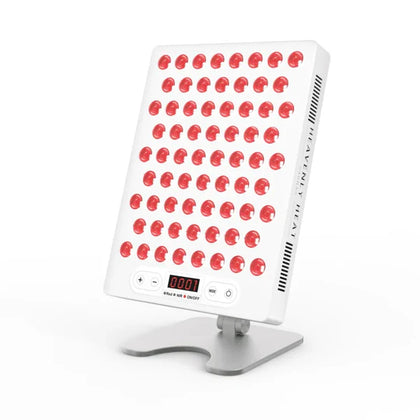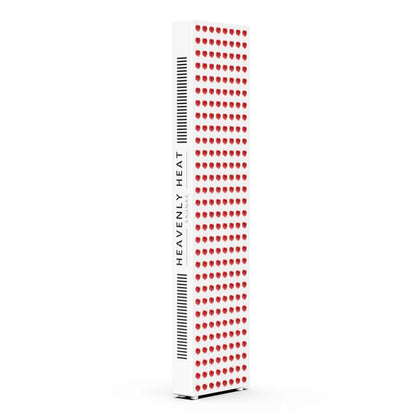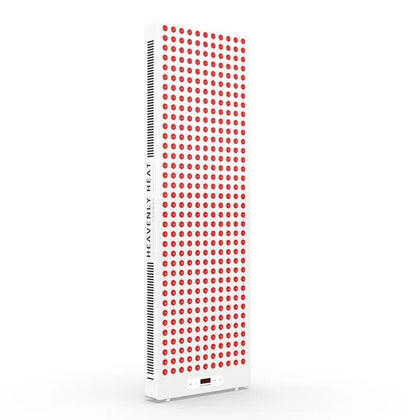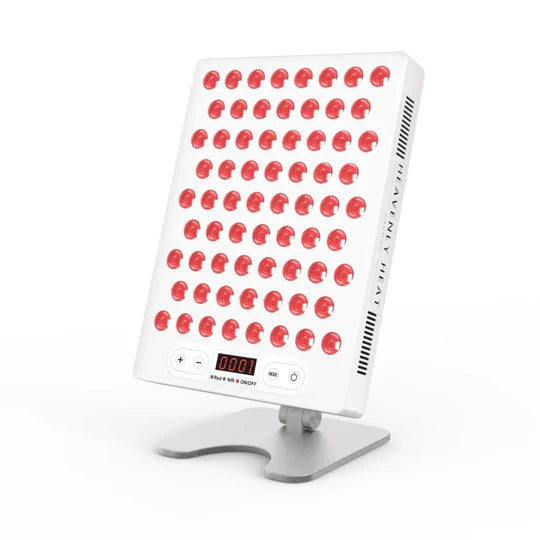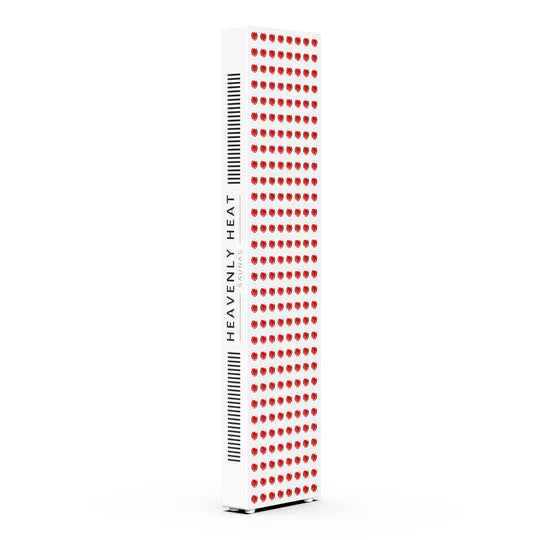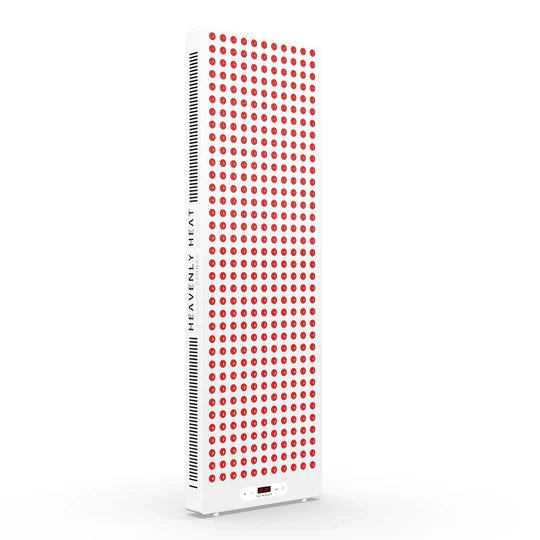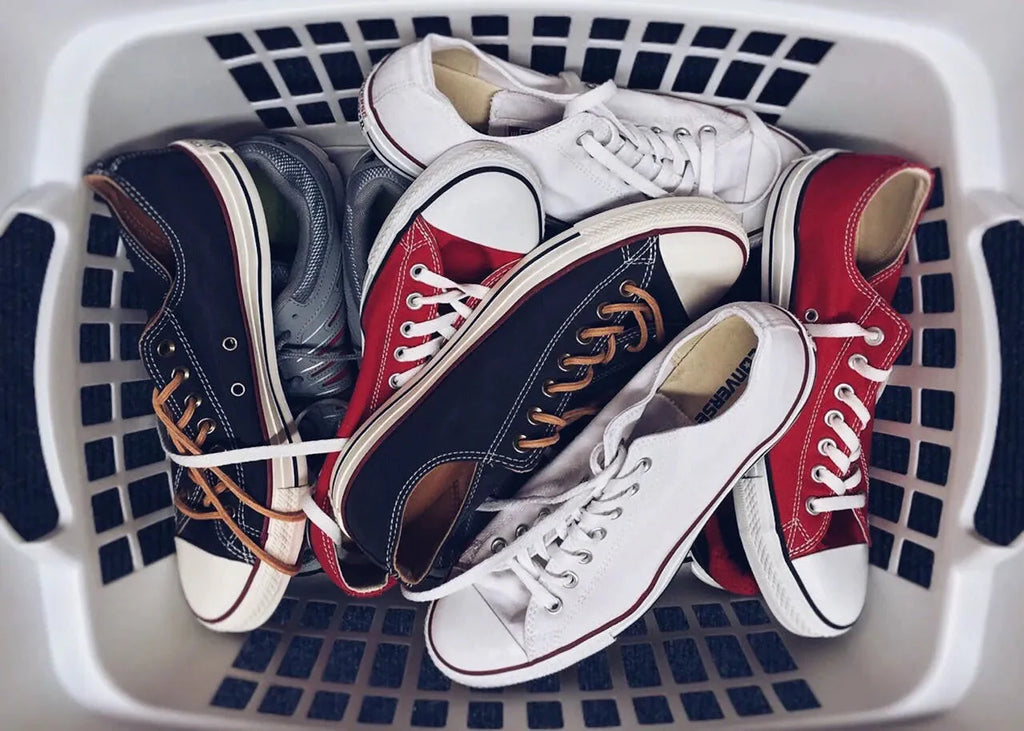Top 15 Red Light Therapy Benefits for Skin Health You Need to Know
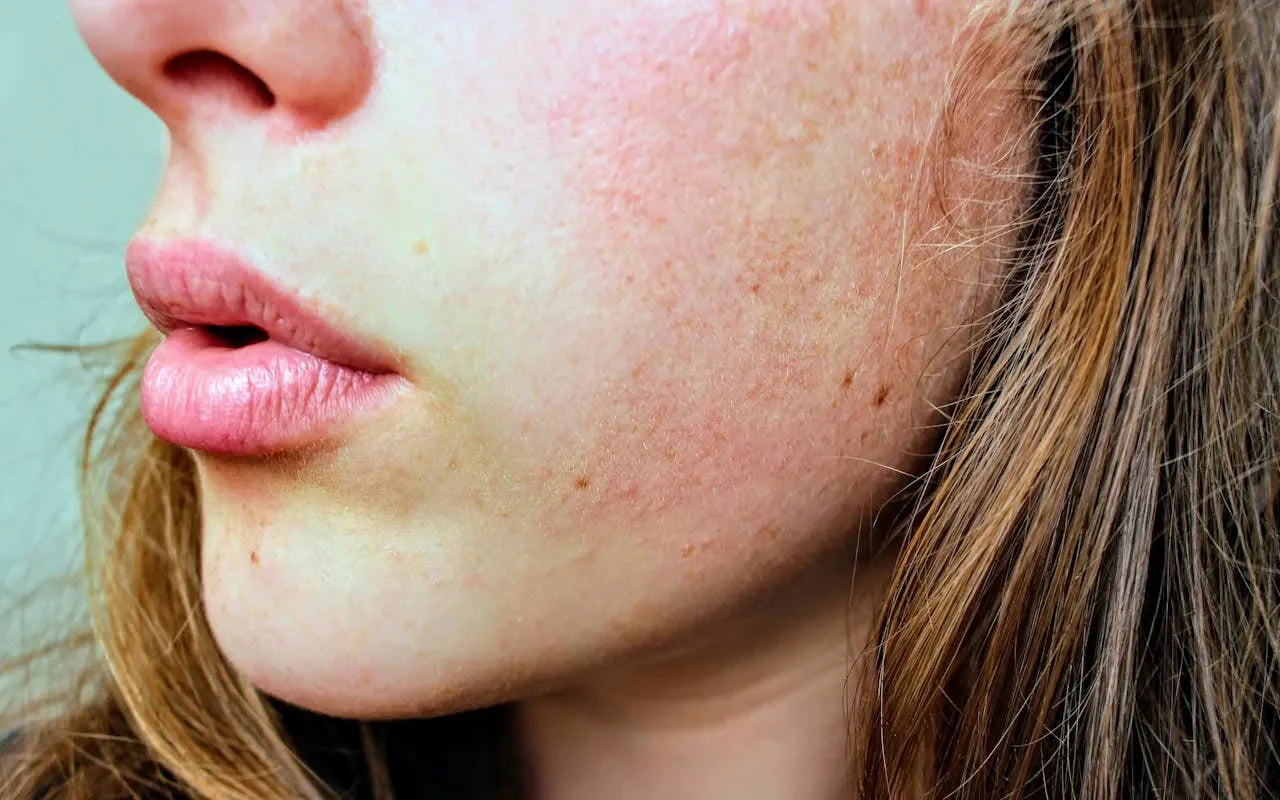
Red light therapy is becoming increasingly popular, especially for its skin-enhancing benefits.
This treatment uses low-wavelength red light to stimulate skin cells, potentially boosting collagen, reducing wrinkles, and promoting healing.
You might have heard that red light therapy can help improve acne, reduce inflammation, and even rejuvenate skin tone, but what does the research say?
In this article, we delve into the science behind red light therapy and uncover the top 15 benefits for your skin health.
Why Choose Red Light Therapy for Skin Health Benefits Over Other Treatments?
- Red light therapy is safe for your skin unlike UV light: UV light can damage your skin and even cause cancer, but red light therapy doesn’t carry those risks. It’s non-carcinogenic, although people with darker skin tones should still watch out for possible dark spots (hyperpigmentation).
- You don’t have to deal with pain or irritation during treatment: Many skin treatments can sting or feel uncomfortable, but red light therapy feels gentle and soothing. There are no harsh side effects, making it an easy choice for regular use.
- Your skin can look better without needing any recovery time: People often see real changes in their skin, and best of all, there’s no downtime. You can walk out of a session and go right back to your normal day.
- You can do the treatment at home without any special training: There are easy-to-use red light therapy devices made for home use. You don’t need to go to a clinic to get started, you can do it yourself in your own time.
- Just because it’s FDA-cleared doesn’t mean it’s fully tested: Many at-home devices are labeled ‘FDA-cleared,’ which only means they meet safety basics. That’s not the same as ‘FDA-approved,’ which means the treatment has been tested to prove it works. So always check if there’s real research behind it.

Top 15 Red Light Therapy Benefits for Skin Health You Need to Know
Visible Reduction in Fine Lines and Wrinkles
- Red light in the 600–700 nm range works best to smooth out fine lines: Devices using red light in this range target surface-level skin issues like wrinkles. This makes them ideal for reducing fine lines and improving skin texture on the outer layers.
- 660 nm red light helps your skin heal and look younger: This specific wavelength goes deeper into your skin, improving blood flow and supporting natural tissue repair, both of which help reduce signs of aging.
- Near-infrared light tells your skin to make more collagen and elastin: This type of light wakes up fibroblast cells, which are responsible for producing collagen and elastin, key proteins that keep your skin firm and youthful-looking.
- People who used red light therapy had smoother skin and more collagen: In studies , people who tried this therapy saw visible results: smoother texture and higher collagen levels, which directly reduce wrinkles and fine lines.
- Real users saw younger-looking skin after using red light therapy: Many users noticed a visible difference in their skin’s appearance, saying it looked fresher, smoother, and more youthful after regular sessions.
Brighter, Even Skin Tone
Red light therapy works wonders for achieving a brighter, more even skin tone. This treatment promotes a smoother complexion by boosting collagen production, which helps to reduce roughness and improve skin texture.
Many people notice a significant improvement in their skin’s appearance after regular sessions, leading to a radiant glow that enhances their overall look.
It makes skin feel and look smoother
- Red light therapy makes your skin feel softer and smoother: Red light therapy improves how your skin feels and looks by working on texture and tone. With regular use, your skin becomes noticeably softer and smoother.
- It helps calm down redness and rough patches: Even though it’s not a guaranteed fix for eczema, red light can reduce inflammation, which often makes the skin feel rough or irritated.
- Using niacinamide with red light makes your skin routine more soothing: Adding a niacinamide serum before your session can boost the calming and smoothing effects, helping your skin feel even better.
- Regular use brings a glow and makes your skin feel less rough: When used often, red light therapy increases collagen, which reduces skin roughness and gives you a healthy, radiant glow.
Increase skin elasticity
Red light therapy helps boost skin elasticity by increasing collagen production and improving skin texture.
Regular sessions can make your skin feel smoother and firmer, while also reducing roughness for a more youthful appearance.
This non-invasive treatment promotes natural skin rejuvenation, so your skin not only looks healthier but feels softer and more resilient over time.
Make the skin’s protective barrier stronger
Red light therapy boosts the skin’s natural defenses, helping the protective barrier stay strong against daily environmental stressors.
It stimulates collagen production and increases blood circulation, enhancing the skin’s ability to repair and regenerate.
As skin ages, it loses resilience and strength, but red light therapy helps maintain its firmness and elasticity.
Aid in the healing of wounds
- Accelerates Wound Healing and Skin Regeneration: Red light therapy helps wounds heal faster by encouraging skin cells to repair and regenerate more efficiently. This speeds up recovery from cuts, scrapes, and scars.
- Reduces Inflammation for Faster Healing: By reducing inflammation in damaged skin, red light therapy helps the skin heal more comfortably and quickly.
- Improves Blood Flow to Support Healing: Red light stimulates new blood vessel growth, which enhances blood circulation to the wounded area. This ensures quicker healing by delivering more oxygen and nutrients to the skin.
- Minimizes Scarring During Healing: Red light therapy supports smooth tissue regeneration, which helps reduce the appearance of scars as the skin heals naturally over time.
Help manage acne
Red light therapy is effective in managing acne by reducing inflammation and preventing new breakouts.
By calming overactive oil glands and enhancing skin cell turnover, it helps clear up acne-prone skin without irritation.
Enhanced Hydration
- Locks in Moisture for Long-Lasting Hydration: Red light therapy helps the skin lock in moisture, keeping it hydrated for longer periods and reducing dryness.
- Improves Skin Texture and Plumpness: By increasing water retention, this therapy improves the texture of your skin, making it feel softer and more plump.
- Boosts Moisturizer Absorption for Better Hydration: When used alongside moisturizers, red light therapy enhances their ability to absorb into the skin, providing better hydration.
Helps decrease the size of skin pores
Red light therapy helps reduce pore size by boosting cell activity and promoting collagen production.
When red light penetrates the skin, it enhances energy production in skin cells, leading to more collagen and elastin, which firm up the skin around the pores.
This tightening effect shrinks the appearance of pores, reducing dirt and oil buildup.
Reduces sebum levels
- Sebum Can Lead to Shine and Breakouts: Sebum is an oily substance produced by your skin to keep it moisturized, but too much of it can lead to shine and breakouts.
- Red Light Therapy Reduces Sebum Levels: Red light therapy helps reduce sebum levels, controlling oily skin.
- How Red Light Therapy Maintains Balanced Sebum Production: By boosting cell activity and reducing oxidative stress, red light therapy helps maintain balanced sebum production, preventing clogged pores and acne.
Reduce the appearance of cellulite
- Red Light Therapy Helps Smooth Skin and Reduce Cellulite: Red light therapy is effective for making skin look firmer and smoother, helping reduce the appearance of cellulite.
- LED Light and Exercise Work Together to Fight Cellulite: A study showed that using infrared-LED light (850 nm) along with treadmill exercises helps reduce cellulite more effectively.
- Boosting Skin Health with Cellular Activation: The infrared-LED light helps activate skin cells, playing a key role in reducing the bumpy texture caused by cellulite.
- Visible Results from Combined Treatment: Women who combined LED therapy with treadmill training saw noticeable reductions in thigh and saddlebag size, leading to smoother skin.
Help with dark circles
- Red Light Therapy Helps Improve Dark Circles: Red light therapy offers a helpful solution for reducing dark circles and improving under-eye skin health.
- Study Shows Positive Effects on Under-Eye Area: A recent study found that red and near-infrared light therapy can significantly improve the skin around the eyes.
- Visible Improvement in Wrinkles and Pigmentation: After six weeks of treatment, participants saw noticeable changes in under-eye wrinkles, skin texture, and dark circles.
- Safe, Comfortable, and Effective Treatment: Participants found the device easy to use, comfortable, and free from major side effects, reporting high satisfaction with the results.
Improves Blood Circulation
- Red Light Therapy Boosts Blood Circulation for Healthier Skin: Improved blood circulation is essential for skin health as it delivers nutrients and oxygen to skin cells while removing waste and toxins. Red light therapy has been shown to play a significant role in boosting blood flow, which directly impacts skin vitality.
- Red Light Promotes Blood Vessel Widening: Research reveals that red light therapy causes vasodilation, the widening of blood vessels, leading to increased blood flow. This helps improve circulation and supports overall skin health.
- Red Light Releases Key Molecules to Improve Circulation: Red light triggers the release of S-nitrosothiols (RSNOs), which are stable molecules found in blood vessels. These molecules help relax smooth muscle cells, leading to better blood circulation and skin nourishment.
- Better Blood Flow Enhances Skin’s Health and Vitality: The improved circulation from red light therapy ensures that skin cells receive the oxygen and nutrients they need, helping to maintain healthier, more vibrant skin.
Reduces Rosacea Symptoms
- Rosacea makes skin red, irritated, and hard to deal with: Rosacea is a skin condition that causes redness, visible veins, and bumps that look like acne. It’s uncomfortable and can lower confidence, especially when it flares up in public.
- Most treatments help, but they don’t always work for everyone: Doctors usually suggest anti-inflammatory creams or medicines, but they don’t always bring long-term relief, and some people can’t tolerate the side effects.
- Light therapy gives new hope to people with rosacea: Recent studies have found that light therapy, especially red light, could help calm down the skin and reduce rosacea symptoms in a safe and gentle way.
- Using blue and red light together shows even better results: Researchers combined blue and red LED light in treatment and saw strong improvements. This mix helped calm the skin and reduce inflammation faster.
- It worked for both young and older people: In the study, both a 22-year-old woman and a 68-year-old man saw great results, showing this therapy might work for people of different ages and skin types.
- Red light therapy was safe and didn’t cause side effects: The patients didn’t report pain, discomfort, or bad reactions. That makes red light therapy a safer option for people who don’t want harsh medications.
- Skin redness and bumps got much better after treatment: The study showed a clear improvement in the skin, less redness, fewer bumps, and an overall healthier look, which is a big win for those living with rosacea.

Effective for psoriasis treatment
- Psoriasis makes life uncomfortable and hard to deal with: Psoriasis causes red, scaly patches that can be painful and embarrassing, making everyday life and confidence harder for those living with it.
- Some light treatments can actually help the skin heal: Researchers found that certain types of light therapy, especially low-level light therapy (LLLT), can reach deep into the skin and support healing from the inside out.
- Light therapy also calms the skin and reduces damage: LLLT not only helps with healing but also cuts down on inflammation and UV damage, giving relief from psoriasis and protecting the skin in the long run.
- Red and near-infrared light work best on stubborn patches: The study showed that red and near-infrared light are most helpful for treating stable psoriasis spots, making them smoother and less irritated over time.
What Wavelength of Red Light Is Best for Your Skin?
- Red light between 630–850 nm works best for skin improvement: Red light in the range of 630 to 850 nanometers is widely recommended for skin treatments because it helps your skin cells work better and look healthier.
- Using 633 nm and 830 nm light helped reduce dark circles: A recent 2024 study showed that using red (633 nm) and near-infrared (830 nm) light under the eyes improved skin texture and reduced puffiness with almost no side effects.
- Some red light devices are officially approved for home use: The FDA has approved certain red light therapy devices, proving they’re safe and effective for everyday use to treat things like wrinkles and dark spots.
- Near-infrared light goes deeper than regular red light: Near-infrared (NIR) light can travel deeper into your skin and body than red light, which may help not just the skin but even deeper tissues and brain cells.
- Red light between 600–850 nm helps your skin make more collagen: Studies show this range of light boosts collagen, the protein that keeps skin firm and smooth, making your skin more resilient and youthful.
- Light at 630 nm makes skin firmer by giving cells more energy: Another study found that 630 nm light reduces wrinkles and firms the skin by giving your cells more energy and cutting down harmful stress inside them.
- There’s no fixed rule for how often to use red light on skin: Different studies use different schedules, from daily to weekly, so it depends on your skin goals and how your skin responds to treatment.

Conclusion
This article has explored the significant benefits of red light therapy for skin health, including improvements in fine lines, tone, elasticity, and the healing of various skin conditions.
These findings suggest that red light therapy is a versatile and effective option for enhancing skin appearance and health.
For those seeking radiant skin, incorporating this treatment into your routine could be worthwhile.
FAQs
Can red light therapy be safely combined with other skincare treatments or products?
Red light therapy can be used with retinol and tretinoin, but wait a few minutes after applying retinol to reduce skin sensitivity. It improves the absorption of serums and moisturizers. Avoid using it right after exfoliants or acids to prevent irritation. Combining it with peptides can enhance collagen production and boost anti-aging effects.
How long does it typically take to see visible improvements in skin health from red light therapy?
Red light therapy can improve skin texture in 1 to 2 weeks, acne scars in 3 to 4 weeks, and wrinkles in 4 to 6 weeks. Skin rejuvenation is visible after a few sessions, and tighter skin takes 6 to 8 weeks. Most people need 10 to 20 sessions for noticeable results, with effects lasting with continued treatments.
Are there any skin types or conditions that should avoid red light therapy?
Red light therapy can irritate sensitive skin, worsening conditions like eczema, psoriasis, and rosacea. It may also worsen hyperpigmentation, so consult a dermatologist if you have dark spots. People with a history of skin cancer should avoid it unless cleared by a healthcare professional. Always check with your doctor before starting treatment.
Does red light therapy work differently depending on the device used (e.g., masks, panels, handheld units)?
Red light therapy devices vary in effectiveness based on type. Masks target small areas like the face but offer limited penetration. Panels cover larger areas with stronger, more concentrated light, while handheld devices provide targeted treatment but may be less powerful. The wavelength of light also affects penetration depth. Choose based on your treatment needs.
Related Articles:
- Best Way to Use Red Light Therapy for Facial Skin
- How often should you do red light therapy?
- The Health Benefits of Using Red Light Therapy






